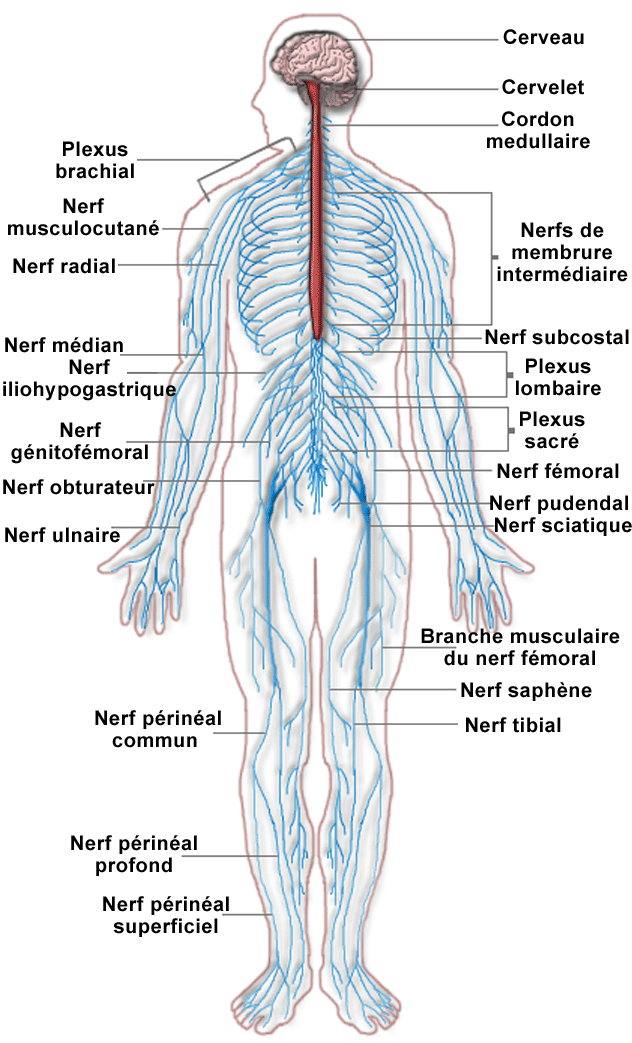Nervous System
As the most complex system, the nervous system serves as the body control center and communications electrical-chemical wiring network. As a key homeostatic regulatory and coordinating system, it detects, interprets, and responds to changes in internal and external conditions. The nervous system integrates countless bits of information and generates appropriate reactions by sending electrochemical impulses through nerves to effector organs such as muscles and glands. The brain and spinal cord are the central nervous system (CNS); the connecting nerve processes to effectors and receptors serve as the peripheral nervous system (PNS). Special sense receptors provide for taste, smell, sight, hearing, and balance. Nerves carry all messages exchanged between the CNS and the rest of the body.

Nervous system: set of nerves, ganglions and nervous centers that receive sensory signal. Commands and coordinates vital functions.
Brachial plexus: network of nerves of the arm.
Intercostal nerve: cord conducting nerve impulses between the ribs.
Radial nerve: cord conducting nerve impulses in the area of the radius.
Median nerve: main cord conducting nerve impulses in the upper limb.
Ulnar nerve: cord conducting nerve impulses in the area of the elbow.
Lumbar plexus: network of nerves of the lower back.
Sciatic nerve: cord conducting nerve impulses in the area of the thigh and lower leg.
Common peroneal nerve: cord conducting nerve impulses along the inside of the lower leg.
Superficial peroneal nerve: cord conducting nerve impulses of the muscles and skin of the leg.
Digital nerve: cord conducting nerve impulses of the fingers.
Sacral plexus: network of nerves of the sacrum.
Spinal cord: substance belonging to the nervous system, found in the holes of the vertebrae.
Cerebellum: nervous centre situated under the brain.
Cerebrum: seat of the mental capacities.
